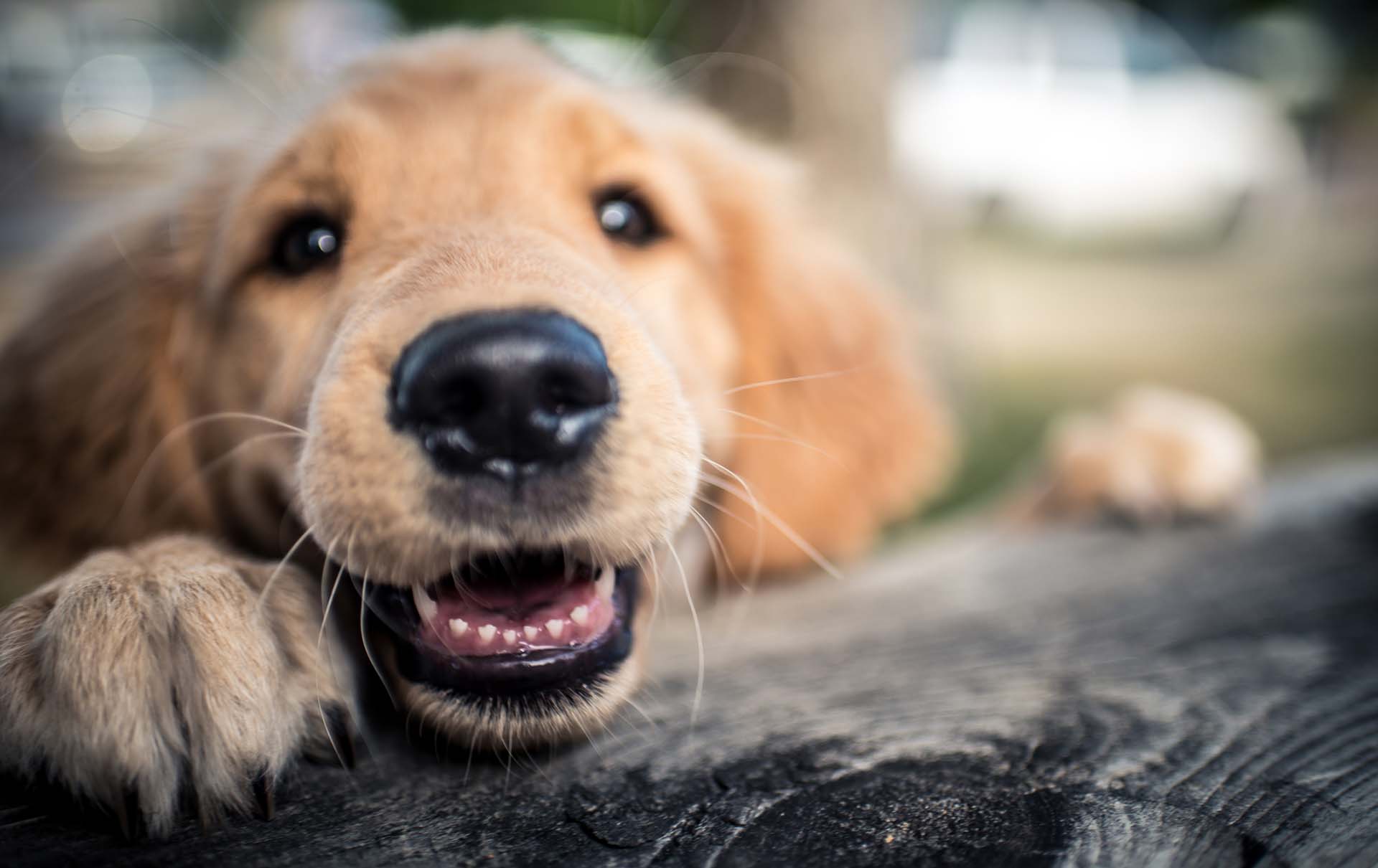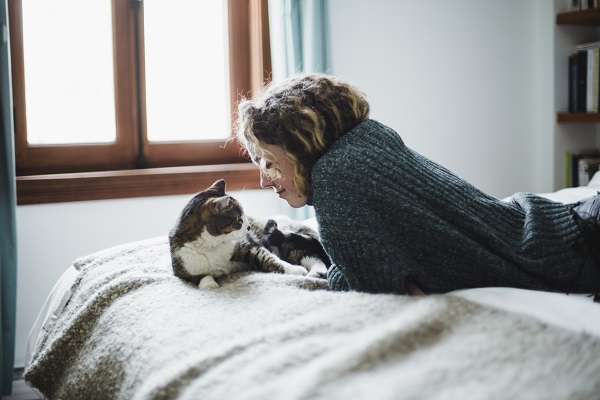-
Your dog uses its whole body to communicate, so you need to look at your dog’s face, ears, tail and stance to fully understand what they are saying. It’s a good idea to get to know what your dog looks like when it’s relaxed at home, so you can compare this to other body postures when out and about.
Here are a few common dog body language cues, and what your pup is trying to tell you.
Understanding your dog's body language


-
Tail wag = “I’m talking to you”
Your dog’s tail is a complex communication device, and it will use it to ‘speak’ to you. A gentle wag as you approach or speak to your dog is its way of saying “Hi best friend”. But a wagging tail doesn’t necessarily mean your dog is happy. If your dog has its tail pointed straight up or out, even if wagging, it could be assessing the danger of a situation or getting ready to assert its dominance.

-
Exposed belly = “I’m no threat”
Dogs show their belly as a gesture of submission, either during play or when threatened. It’s important to know the difference before going in for a rub, as if a dog is scared, rubbing it on the belly may make it worse. In this case, talking to it gently and getting low to the ground can put it at ease.

-
Yawn, scratch, sneeze or shake off = “I’m nervous”
Have you ever noticed that as soon as you pick up your dog’s lead, your pooch starts to yawn, shake or scratch? It may not be sleepy or in need of a flea treatment. These are displacement signals your dog uses to release stress or distract others from its feelings. It’s a good way to know when your dog is more anxious than it’s letting on.

-
Bowing = “Let’s play!”
A dog that’s flattening its front end against the ground while sticking its butt in the air is sending a loud and clear message that it wants to play. Right. Now.

-
Look away = “I have heaps of respect for you”
If your dog looks away when you’re gazing lovingly into its eyes, it’s not a sign that you’re being boring. Looking away shows deference and respect. Some trainers recommend limiting how often you break eye-contact when training a young dog, so it feels safe knowing you’re in control.

-
Lip licking = “I’m sorry”
If your dog’s licking its lips and it’s not dinnertime, it could be showing submission. Dogs lick their lips if they’re scared, or being told off for eating your sandwich when you weren’t looking.
Illustrations: Lili Chin
-
How to prevent and treat dental injuries
Specialist dentist Associate Professor William Ha shares some tips on how to keep your teeth safe during sports by wearing a mouthguard.
-
The many benefits of volunteering
When you volunteer, the good doesn't stop there. Research has found that those who give their time for something are usually happier and healthier than those who don’t.
-
Eat for your eyes
Some of our favourite foods to help keep your eyes healthy.
-
How is ‘phubbing’ hurting your relationships?
Here’s how to stop phubbing and be more mindful of your phone habits, to help improve face to face interactions with your family and friends.
-
Are the winter blues real?
Simple ways to boost your mood in winter.
-
Mental fitness explained
Just as you work to strengthen your body, your mental health deserves attention and exercise too.
Subscribe to receive the best from Live Better every week. Healthy recipes, exercise tips and activities, offers and promotions – everything to help you eat, move and feel better.
By clicking sign up I understand and agree to Medibank's privacy policy






